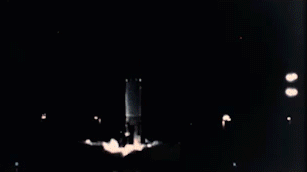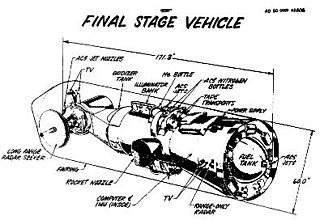
Johnston Atoll is an unincorporated territory of the United States, under the jurisdiction of the United States Air Force (USAF). The island is closed to public entry, and limited access for management needs is only granted by a letter of authorization from the USAF. A special use permit is also required from the United States Fish and Wildlife Service (USFWS) to access the island by boat or enter the waters surrounding the island, which are designated as a National Wildlife Refuge and part of the Pacific Islands Heritage Marine National Monument. The Johnston Atoll National Wildlife Refuge extends from the shore out to 12 nautical miles, continuing as part of the National Wildlife Refuge System out to 200 nautical miles. The Pacific Remote Islands Marine National Monument extends from the shore out to 200 nautical miles.

Vandenberg Space Force Base, previously Vandenberg Air Force Base, is a United States Space Force Base in Santa Barbara County, California. Established in 1941, Vandenberg Space Force Base is a space launch base, launching spacecraft from the Western Range, and also performs missile testing. The United States Space Force's Space Launch Delta 30 serves as the host delta for the base, equivalent to an Air Force air base wing. In addition to its military space launch mission, Vandenberg Space Force Base also hosts space launches for civil and commercial space entities, such as NASA and SpaceX.

Operation Argus was a series of United States low-yield, high-altitude nuclear weapons tests and missile tests secretly conducted from 27 August to 9 September 1958 over the South Atlantic Ocean. The tests were performed by the Defense Nuclear Agency.

Anti-satellite weapons (ASAT) are space weapons designed to incapacitate or destroy satellites for strategic or tactical purposes. Although no ASAT system has yet been utilized in warfare, a few countries have successfully shot down their own satellites to demonstrate their ASAT capabilities in a show of force. ASATs have also been used to remove decommissioned satellites.

The PGM-17A Thor was the first operative ballistic missile of the United States Air Force (USAF). It was named after the Norse god of thunder. It was deployed in the United Kingdom between 1959 and September 1963 as an intermediate-range ballistic missile (IRBM) with thermonuclear warheads. Thor was 65 feet (20 m) in height and 8 feet (2.4 m) in diameter.

Space weapons are weapons used in space warfare. They include weapons that can attack space systems in orbit, attack targets on the earth from space or disable missiles travelling through space. In the course of the militarisation of space, such weapons were developed mainly by the contesting superpowers during the Cold War, and some remain under development today. Space weapons are also a central theme in military science fiction and sci-fi video games.

Starfish Prime was a high-altitude nuclear test conducted by the United States, a joint effort of the Atomic Energy Commission (AEC) and the Defense Atomic Support Agency. It was launched from Johnston Atoll on July 9, 1962, and was the largest nuclear test conducted in outer space, and one of five conducted by the US in space.

The militarisation of space involves the placement and development of weaponry and military technology in outer space. The early exploration of space in the mid-20th century had, in part, a military motivation, as the United States and the Soviet Union used it as an opportunity to demonstrate ballistic-missile technology and other technologies having the potential for military application. Outer space has since been used as an operating location for military spacecraft such as imaging and communications satellites, and some ballistic missiles pass through outer space during their flight. As of 2018, known deployments of weapons stationed in space include only the Almaz space-station armament and pistols such as the TP-82 Cosmonaut survival pistol.

Operation Fishbowl was a series of high-altitude nuclear tests in 1962 that were carried out by the United States as a part of the larger Operation Dominic nuclear test program.

Nuclear weapons delivery is the technology and systems used to place a nuclear weapon at the position of detonation, on or near its target. Several methods have been developed to carry out this task.

High-altitude nuclear explosions are the result of nuclear weapons testing within the upper layers of the Earth's atmosphere and in outer space. Several such tests were performed at high altitudes by the United States and the Soviet Union between 1958 and 1962.

HARDTACK-Teak was an exoatmospheric high altitude nuclear weapon test performed during Operation Newsreel. It was launched from Johnston Atoll on a Redstone missile. On 1 August 1958, the 3.88 Mt (16.2 PJ) shot detonated at an altitude of 76.8 km.

The ASM-135 ASAT is an air-launched anti-satellite multistage missile that was developed by Ling-Temco-Vought's LTV Aerospace division. The ASM-135 was carried exclusively by United States Air Force (USAF) F-15 Eagle fighter aircraft.

Space Systems Command (SSC) is the United States Space Force's space development, acquisition, launch, and logistics field command. It is headquartered at Los Angeles Air Force Base, California, and manages the United States' space launch ranges.

Space Launch Complex 10 (SLC-10), or Missile Launch Complex 10, is located on Vandenberg Space Force Base in Lompoc, California. It was built in 1958 to test ballistic missiles and developed into a space launching facility in 1963. Prior to 1966, Space Launch Complex 10W (SLC-10W) was known as Vandenberg AFB Pad 75-2-6. It remains a rare pristine look at the electronics and facilities created in that era that helped the United States grow its space capabilities.
The Thor DSV-2 was a series of sounding rockets, test vehicles, and anti-satellite weapons derived from the Thor Intermediate-range ballistic missile. It was also used as the first stage of several Thor-derived expendable launch systems.

The 10th Aerospace Defense Group was inactivated on 31 December 1970 by the United States Air Force (USAF). Its last assignment was with Fourteenth Aerospace Force at Vandenberg Air Force Base, California. The 10th Aerospace Defense Group and Squadron were the sole operators of the United States' second nuclear-tipped anti-satellite weapon, Weapons System 437 (WS-437). For this reason the squadron continues the group history through temporary bestowal.

System A-235 PL-19 Nudol is a Russian hypersonic anti-ballistic missile and anti-satellite weapon system in development. It is designed to deflect a nuclear attack on Moscow and other regions within European Russia. The main developer of the system is JSC Concern VKO Almaz-Antey. The new system should replace the current one — A-135. The two main differences will be that the A-235 will use conventional warheads and it will be road-mobile.

Project SAINT was a project undertaken by the United States during the Cold War to develop a means of intercepting, inspecting and destroying Soviet spacecraft. Many details relating to the project are still classified. The order to launch the SAINT could only be given by the NORAD commander-in-chief, and presumably, anyone higher ranked than them.





























